Mud is often an unsightly eyesore in a backyard, but it doesn’t have to be that way. There are many ways to cover up mud and make your yard look great. In this article, we will discuss the best methods for covering up mud in your backyard and how to choose the right option for your needs. We’ll also provide tips on how to keep your backyard looking neat and tidy all year round!
What Problems Can Mud Cause in Your Garden
Everyone wants a beautiful, lush green lawn. But what happens when your backyard turns into a muddy mess? Not only is it unsightly, but mud can actually cause some serious problems in your garden.
Soil compaction
Mud can cause problems with soil compaction. When the ground is too wet, it can become compacted and hard to dig. This can make it difficult for roots to penetrate the soil and get the nutrients they need. Compacted soil can also lead to drainage problems. Water will run off the surface of compacted soil instead of soaking in, which can lead to flooding or waterlogging.
It’s a potential safety hazard
Another problem with mud is that it can be a potential safety hazard. If you have young children or pets, they could slip and fall in the mud and get injured. Mud can also make it difficult to walk around your garden without getting dirty or wet.
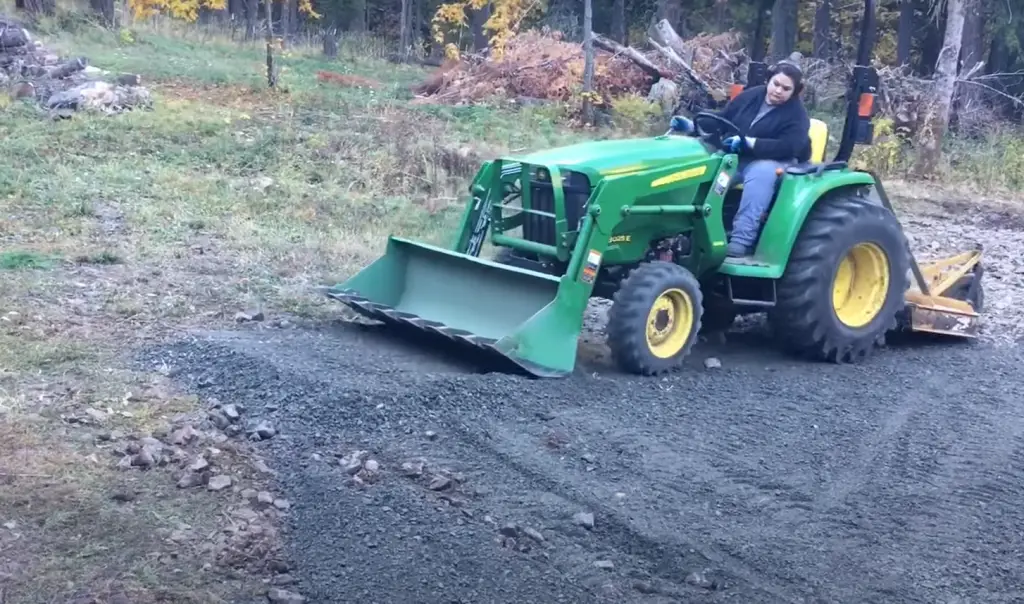
It can attract diseases and pests
Mud can also attract diseases and pests. If your garden is full of mud, it’s the perfect breeding ground for mosquitoes and other insects. And if you have any plants in your garden, they could be more susceptible to fungal diseases if the soil is too wet.
It’s simply unsightly
Of course, one of the main problems with mud is that it’s just plain unsightly. No one wants to look at a muddy mess, and it can be hard to enjoy your garden when it’s covered in muck.
What Causes Mud In Your Backyard?
Before dealing with the problem of mud, it’s important to understand what causes it. There are a few different things that can contribute to a muddy backyard.
Rainy weather
Obviously, one of the main causes of mud is rain. If you live in an area with a lot of rainfall, you’re more likely to have problems with mud. When it rains, water seeps into the ground and can make the soil muddy. If you have a lot of trees in your yard, their roots can also contribute to mud by absorbing water and making the ground wetter.
Poor drainage
Another common cause of mud is poor drainage. If your yard doesn’t have good drainage, water will pool on the surface and make the ground muddy. This is especially a problem if you live in an area with heavy rains.
Low terrain level
Sometimes, your backyard might be lower than the surrounding land. When it rains, the water will run down into your yard and pool there. If you have a lot of trees in your yard, their roots can also contribute to this problem.
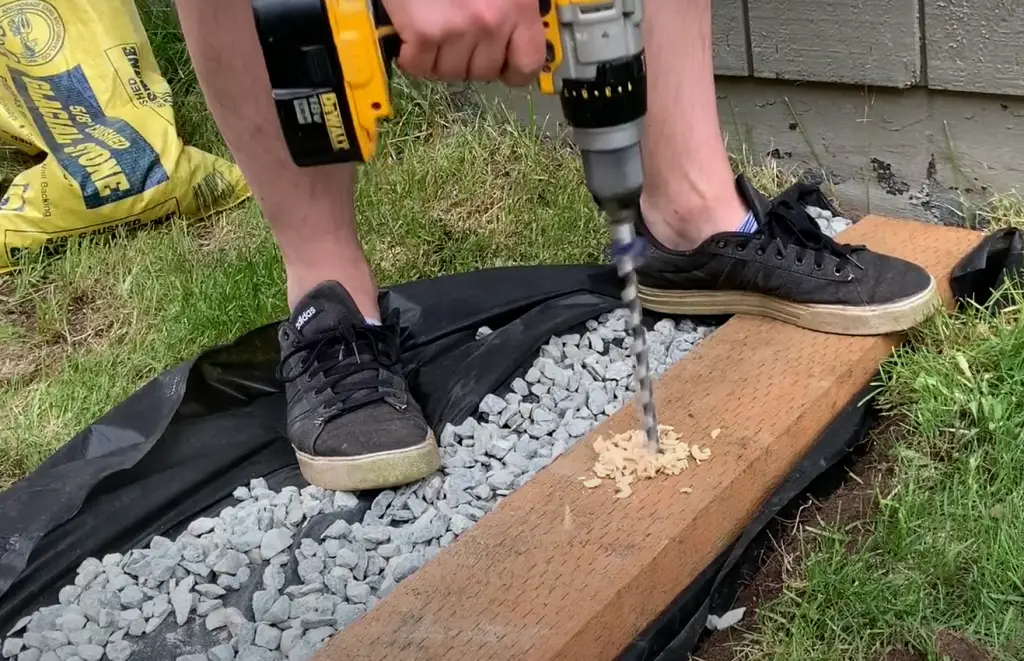
Compact soil and thatch
If your soil is too compacted, it won’t drain well and will become muddy when it rains. Thatched also doesn’t drain well, so if you have a lot of thatch in your yard, it can contribute to mud.
Animals
Finally, animals can also contribute to mud in your backyard. If you have a lot of pets, they might be tracked in mud from outside. Or, if you live near a farm, animals might come into your yard and make it muddy. [1] [2] [3]
Covering Up Mud In Your Backyard
So what’s the best way to deal with mud in your garden? The best solution is to cover it up with something that will prevent the mud from causing problems. In this section, we’ll discuss a few different options for covering up mud.
Sodding
To install sod, simply lay the pieces of sod on top of the mud in your garden. Make sure that the sod is in contact with the soil so that it can take root. Water the sod daily until it is established.
Sod will not only cover up the mud in your garden, but it will also provide you with a green space that you can enjoy. [1]
Utilize creeping plants
Another way to deal with mud is to plant creeping plants that will serve as a ground cover. These are plants that have long roots that can help hold the soil in place. There are a few different types of creeping plants that you can choose from, including:
- Ivy;
- Groundcover;
- Vines;
If you decide to go with vines, make sure to choose ones that are heavy-duty and can handle the conditions of the soil. Otherwise, they may not be able to provide the support you need.
There are a few other things to keep in mind when choosing plants to cover up mud. Make sure to choose plants that are native to your area and can tolerate the local climate. Also, make sure to choose plants that are drought-tolerant so they don’t require a lot of water.
Once you’ve chosen the right plant, it’s time to get started planting. The best time to plant is in the spring or fall when the weather is not too cool but not too hot. Planting in the summer can be difficult because the heat can stress the plants and make them more susceptible to disease.
When you’re ready to plant, dig a hole that’s twice as wide as the root ball of the plant. Place the plant in the hole and backfill it with soil. Water the plant well and mulch around the base to help hold in moisture.
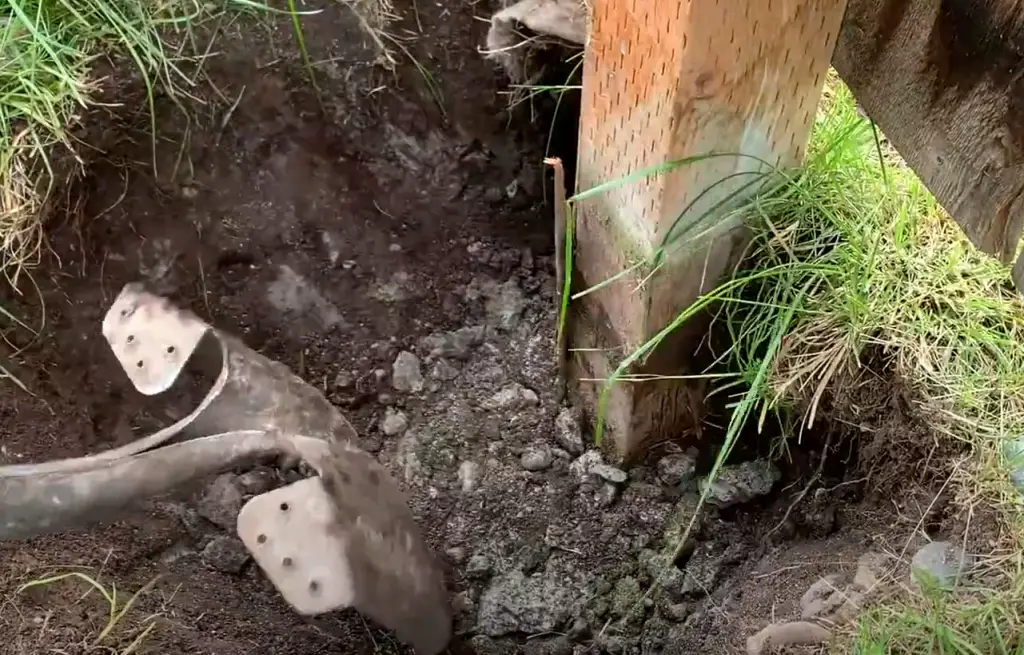
It’s important to water the plants regularly, especially during the first few weeks after planting. Once the plants are established, they will be more drought-tolerant and won’t need as much water.
If you have a lot of mud in your garden, you may need to cover it with more than just plants. [1] [2]
Using mulch or gravel
Mulch is one of the best things you can use to cover up mud. Mulch is a material that you spread over the ground to help with drainage and prevent weeds. It comes in a variety of colors and can be made from different materials, such as wood chips, bark, straw, or leaves. You can find mulch at most garden stores.
Gravel
Another option for covering up mud is gravel. Gravel is a type of rock that comes in various sizes. It’s often used on driveways and paths because it doesn’t get muddy when it rains. You can spread gravel over your entire yard or just in the areas where you have problems with mud.
Use wood chips
Wood chips are another type of mulch that you can use to cover up mud. Wood chips are made from tree bark and other wood materials. They’re a good choice for covering up mud because they help with drainage and prevent weeds. You can find wood chips at most garden stores or online.c [1] [2]
Create a path
You can also utilize gravel or other materials to create a path through your backyard. This is an especially good idea if you have a lot of mud, or if the mud is in an area that gets a lot of traffic. Creating a path will allow you to avoid the mud and keep your yard looking neat.
Gravel is a great option because it’s easy to work with and it doesn’t require much maintenance. Plus, it will help to keep the mud from being too much of a problem.
Creating a path will not only solve the problem of mud in your yard, but it will also add value to your home. [1] [2]
Build a rain garden
If you can’t keep the mud from happening in the first place, you can at least try to control it by building a rain garden. A rain garden is simply a collection of plants that are tolerant of wet conditions. By planting a rain garden, you can help to redirect runoff away from areas where it might cause problems.
A rain garden is a great way to manage runoff from your property and protect your home from flooding. Not only will it help control erosion, but it can also provide a beautiful addition to your landscaping. Here are some tips on how to build a rain garden:
Pick the right location: A rain garden should be located in an area that drains well and is away from any buildings or other structures. You also want to make sure that the area you choose is well-drained.
Create the basin: The basin of the rain garden should be slightly depressed so that water will flow into it. Be sure to make it large enough to accommodate the amount of runoff you expect from storms.
Add plants: Choose plants that are tolerant of wet conditions for your rain garden. Native plants are a great option, as they are already adapted to the local climate. Make sure that the garden is large enough to handle the amount of runoff you expect it to receive.
Mulch: Apply a layer of mulch over the soil to help keep the moisture in and prevent erosion.
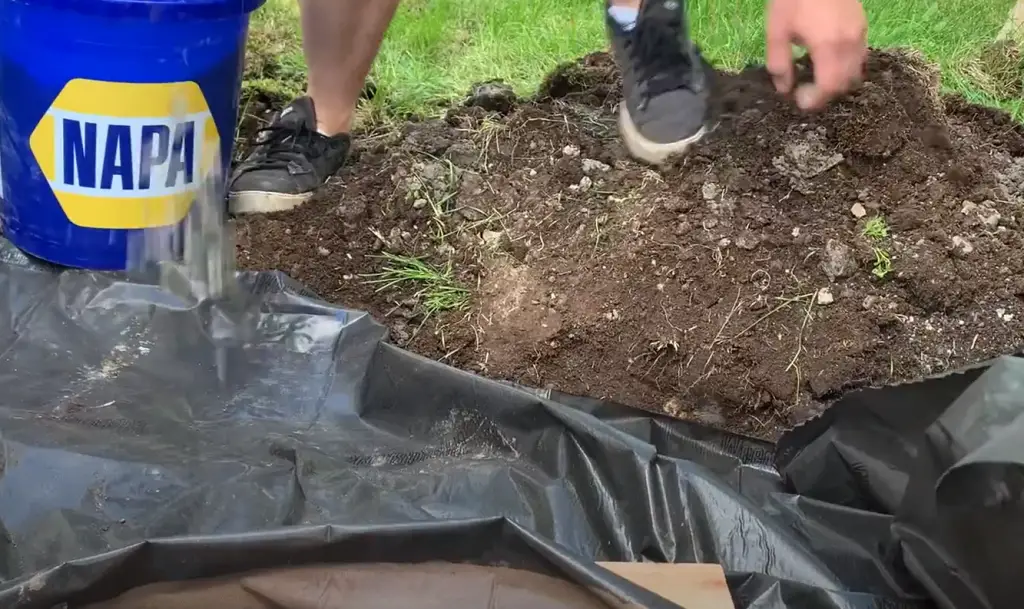
Once you’ve built your rain garden, it’s important to keep an eye on it and make sure that it’s functioning properly. If you see any problems, don’t hesitate to contact a professional for help. [1] [2]
Use concrete
Another option for covering up mud is to use concrete. Concrete is a durable material that can withstand heavy foot traffic and will not be easily damaged by the elements. It’s also relatively easy to install, so you won’t need to hire a professional to do it for you.
Concrete does have a few drawbacks, however. It can be expensive, and it’s not always the most attractive solution. If you’re looking for something that will improve the look of your garden, concrete might not be the best option.
Another downside of concrete is that it can be difficult to remove if you decide you want to change things up in the future. If you’re thinking about using concrete to cover up mud in your backyard, make sure you’re prepared to commit to it for the long term.
If you decide that concrete is the right solution for you, there are a few things you’ll need to do to prepare for its installation. First, you’ll need to excavate the area where the concrete will be placed. This involves removing any grass, weeds, or other plants from the area. You’ll also need to level out the ground so that it’s flat and even.
Once the area is prepared, you can mix and pour the concrete. Be sure to follow the instructions on the package carefully so that it sets properly. Once it’s dry, you’ll have a durable, long-lasting surface that will keep your backyard looking great for years to come. [1] [2]
Use pavers
Concrete is a great option for covering up mud, but it’s not the only one. If you’re looking for something that’s less expensive or more attractive, you might want to consider using pavers. Pavers are small, flat stones that can be laid down in a variety of patterns. They’re relatively easy to install, and they come in a wide range of colors and styles.
Pavers have a few advantages over concrete. First, they’re generally less expensive than concrete. Second, they offer a more versatile look that can be customized to match the style of your home or garden. Finally, pavers can be removed and replaced more easily than concrete, so they offer more flexibility if you decide you want to change the look of your yard in the future.
If you’re considering using pavers to cover up mud, there are a few things you should keep in mind. First, make sure you choose a paver that’s durable and weather-resistant. Second, consider the size of the pavers you’ll need. Pavers come in a range of sizes, so it’s important to choose one that’s big enough to cover the area of mud you’re dealing with. Finally, be sure to follow the manufacturer’s instructions for installing pavers to ensure they stay in place and don’t shift over time.
If you’re covering a large area of mud, you might want to consider using multiple pavers. This will create a more stable surface and it will also make it easier to clean up if the pavers get dirty. [1] [2]
Improve drainage
The obvious solution to mud is to improve drainage. This can be done by installing a drainage system, adding more organic matter to the soil, or simply by making sure that there is no standing water in the area.
This is a good option if you have problems with standing water or flooding in your yard. A drainage system will collect the water and redirect it away from your house and garden. You can install a drainage system yourself or hire a professional to do it for you.
A French drain, also called a curtain drain, is a drainage system used to remove excess water from an area. French drains are typically installed around the perimeter of a home or in areas where water tends to pool. The system consists of a perforated pipe that is buried in gravel and directs water away from the foundation or problem area. French drains can be used to prevent basement flooding, redirect runoff from downspouts, and mitigate problems with standing water in your yard.
If you have poor drainage, chances are that you also have compacted soil. This means that the soil is too dense and does not allow water to drain through it easily. To improve drainage, you’ll need to loosen up the soil. You can do this with a garden fork or a rototiller.
Once you’ve loosened up the soil, you should add some organic matter to it. This could be in the form of compost, manure, or even just leaves and grass clippings. The organic matter will help to hold onto water and improve drainage. [1] [2] [3]
Re-grading your yard
Re-grading is the process of changing the slope or grade of your yard so that water will run off of it instead of pooling. It’s a common solution to the problem of puddles in your yard, and it can also help with drainage issues in general.
This involves using a shovel or other tool to level out the ground so that it slopes away from your house. Regrading will help prevent water from pooling in your yard and causing mud to form. If you have a lot of mud, you may need to bring in some topsoil to fill in low spots. You can also add mulch or gravel to areas that are prone to mud.
Re-grading is a bit of a hassle, but it’s usually the best long-term solution for preventing mud problems.
Finally, no matter which method you use to improve drainage, you should make sure that there is no standing water in your yard. This could be caused by a clogged gutter or downspout, or simply by not having enough slope in your yard. You can fix this by cleaning out the gutters and making sure they’re draining properly. You might also need to add some additional soil to create a slope. [1] [2] [3]
FAQ
What can I put in my backyard to cover the dirt?
One option is to use mulch. This is a material that helps keep the ground moist and can also help prevent weed growth. You can find mulch at most garden centers or hardware stores.
You could also try using stones or gravel. This can help keep the area around your home looking tidy while also helping to prevent mud from forming. Stones and gravel can be found at most landscape supply stores or hardware stores. Finally, you could plant grass seeds in the area to help cover up the mud.
How do I mud-proof my yard?
There are a few things you can do to mud-proof your yard. One is to make sure that any drains or gutters are clear and free of debris. This will help ensure that water flows away from your home and doesn’t pool in your yard. Another thing you can do is plant grass or another ground cover in areas that tend to get muddy. This will help stabilize the soil and prevent it from getting too wet and churned up. Finally, you can use mulch or rocks as a surface material in areas that are particularly prone to mud. This will help keep the mud from splashing up onto your home or patio furniture.
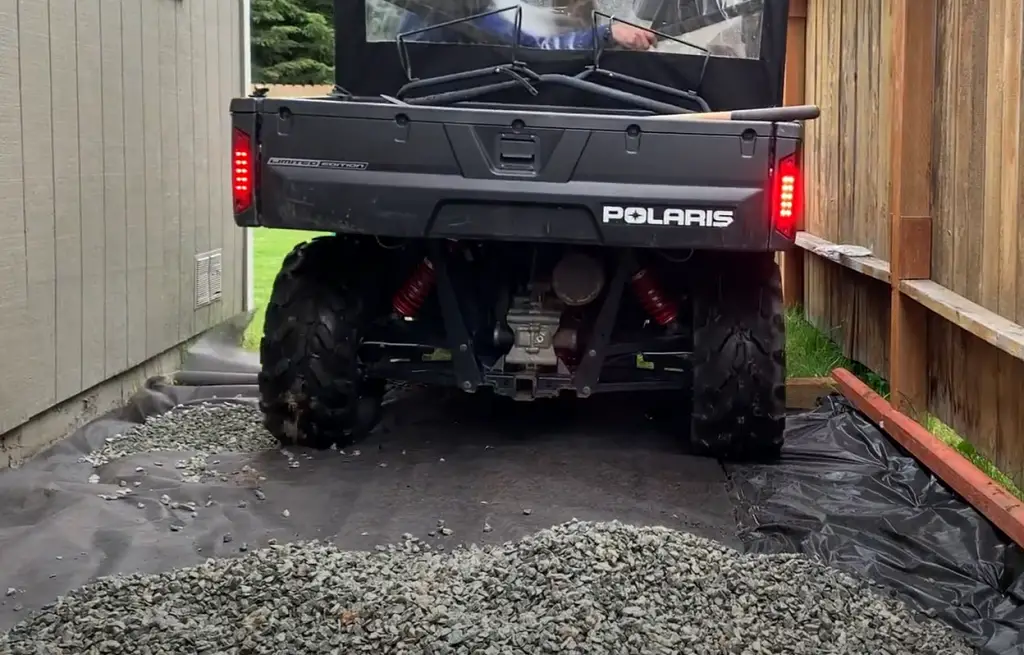
What can you do for a muddy backyard with dogs?
If you have a backyard with dogs, chances are you’re going to have to deal with some mud. While it may not be the most pleasant thing to deal with, there are some things you can do to make sure your backyard stays clean and mud-free.
One of the best ways to keep your backyard from getting muddy is to create a designated area for your dogs to play in. This can be done by creating a sandbox or using mulch in your yard. If you have a large yard, you may even want to consider fencing off a portion of it for your dog’s use only. This will help to keep them from tracking mud all over the place.
How do you fix a soggy muddy lawn?
The best way to fix a soggy, muddy lawn is to aerate the soil and improve drainage. This can be done by adding organic matter, such as compost, to the soil. You can also install a French drain or another type of drainage system. If you have a very large problem, you may need to re-grade your yard so that water flows away from your home.
Useful Video: How To Deal With A Muddy Property
Conclusion
The rainy season may be beneficial to the growth of your plants but it can be a total pain to maintain a clean backyard. Mud isn’t only unpleasant to look at but it can also be a breeding ground for bacteria. The good news is, there are a few ways you can effectively cover up mud in your backyard without having to break the bank. There are a few different options for covering up mud in your backyard. The best option for you will depend on the amount of mud you have, the location of the mud, and your budget.
One of the most common methods is to use mulch. Mulch is a layer of material that you spread over the surface of the soil. It can be made from organic materials like bark, leaves, and compost, or inorganic materials like stones and gravel. You can also plant grass and improve your drainage system to get rid of mud for good. Re-grading your yard may be a lot of work but it’s definitely worth it in the long run. We hope you found this guide helpful. If you have any questions or suggestions, feel free to leave us a comment below. Happy gardening!
References:
- https://ourgardenworks.com/cover-up-mud-in-backyard/
- https://www.outdoorhappens.com/how-to-cover-up-mud-in-backyard/
- https://housemethod.com/lawn/standing-water-in-yard/






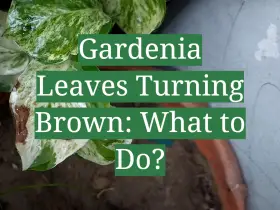


Leave a Reply
View Comments